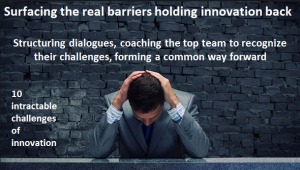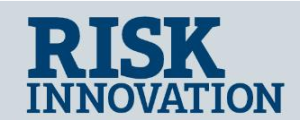 A Question:
A Question:
If you could ask those that lead innovation, your senior organizational leadership, a series of questions that might help unlock innovation blockages, now would that be valuable?
Getting to a root cause of innovation blockage
So what does block innovation? Arguably there are plenty of things up and down organizations: a lack of resources, an overcrowded portfolio of ideas, a lack of dedicated people, treating innovation as a one-off, keeping it isolated and apart from mainstream activities.
The list could go on and on, no question but to seek out a meaningful exchange of minds let me offer these outlined below as ones to tackle. Get a discussion going on all of these needs ‘being selective’, raised at separate times and then integrated into a collective ‘declaration of innovation intent’ going forward.
Let’s take a different perspective.
If you could ask a series of questions that might help unlock innovation blockages it would make such a difference to our innovation performance and engagement. I think this might need a good external facilitator as my recommendation, one who has deep innovation knowledge and expertise, able to manage the ‘dynamics’ within the room.
Continue reading “Coaching helps overcome the ten innovation intractables”


